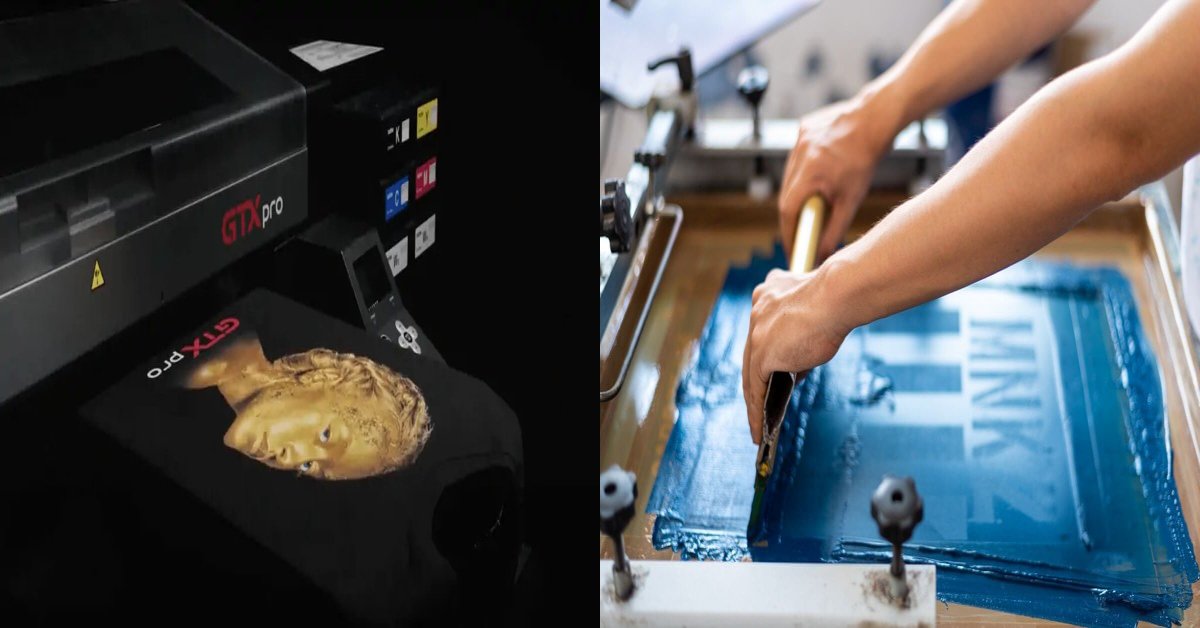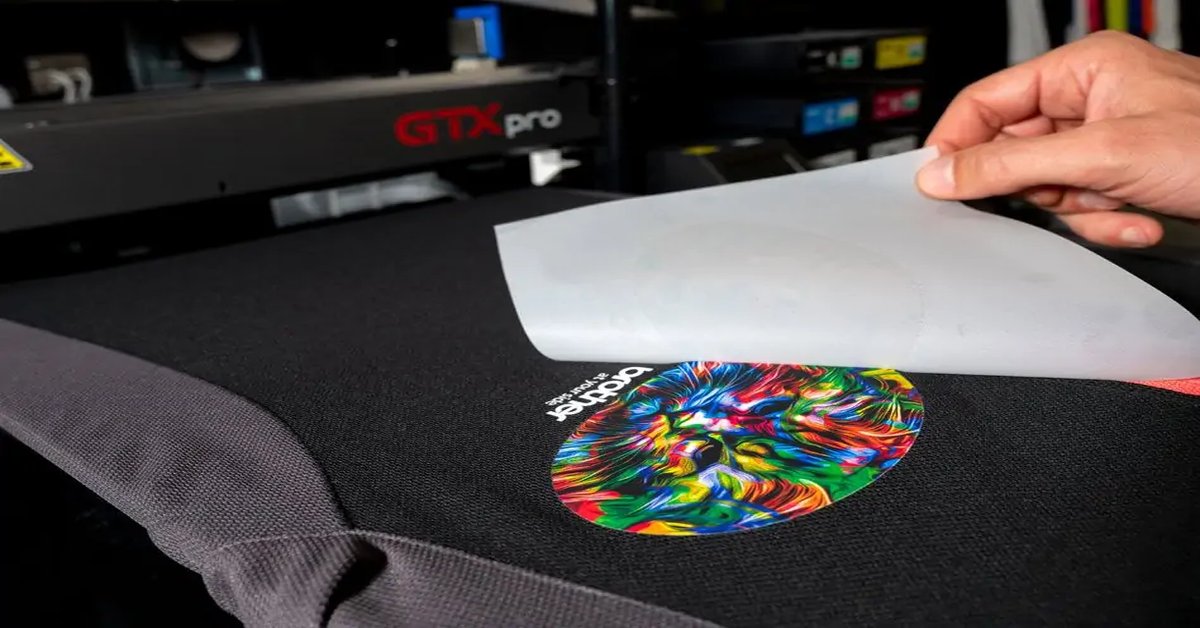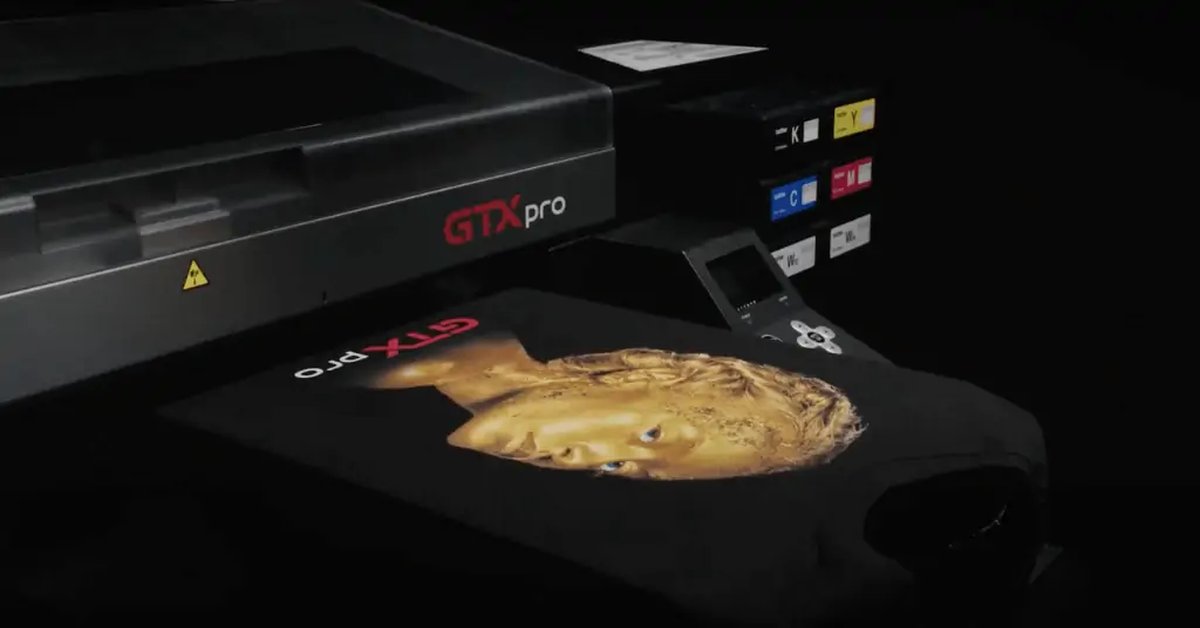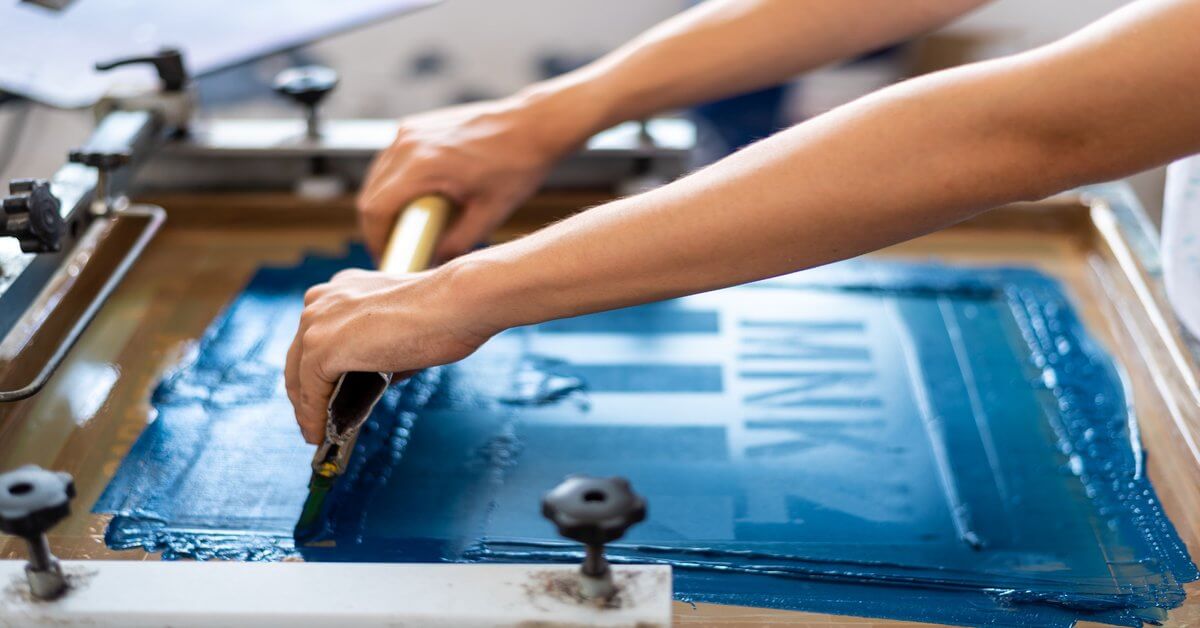Your Cart is Empty
In order to provide you with a competitive quote, Please send us the following and we’ll get back to you as soon as we can:

The world of custom apparel printing offers a wide range of techniques, but two of the most popular methods are screen printing and Direct-to-Garment (DTG) printing. These techniques are widely used for creating custom t-shirts, hoodies, and other garments, but each has its advantages and disadvantages, making them suitable for different types of projects and business models.
Whether you're looking to start a custom printing business, trying to choose the right method for your personal project, or simply curious about how these two printing techniques compare, this comprehensive guide will walk you through everything you need to know about Screen Printing vs. Direct-to-Garment (DTG). We’ll explore the pros and cons of each method, when to use one over the other, the costs involved, the equipment needed, and much more.
Screen printing, also known as silkscreen printing or serigraphy, is a technique that involves transferring ink through a mesh screen (often made of polyester) onto a substrate, typically fabric. A stencil or design is created by blocking certain areas of the screen using emulsion, leaving open spaces where the ink can pass through.
The process typically involves a separate screen for each color in the design, and the ink is applied one layer at a time. Screen printing is known for producing vibrant, long-lasting prints and is a popular choice for creating custom t-shirts, posters, and other products that require bold colors and designs.
How It Works:
Screen printing is often used for high-volume orders due to its cost-effectiveness for larger quantities. It is particularly well-suited for simple designs with a limited number of colors.
Direct-to-Garment (DTG) printing is a digital printing technique that involves using inkjet technology to print designs directly onto the fabric. Unlike screen printing, DTG doesn't require the creation of stencils or screens. Instead, a DTG printer applies water-based inks directly to the garment, similar to how a desktop printer works.
DTG is capable of producing high-resolution, full-color prints with detailed designs, gradients, and even photographs. It’s ideal for custom t-shirts, hoodies, and other apparel, and it’s particularly effective for small orders or one-off items.
How It Works:
DTG printing allows for unlimited color combinations and intricate designs, making it ideal for printing complex, multi-color artwork or detailed images.
Screen printing has been around for centuries, with its origins dating back to ancient China and Japan, where stencils were used to apply designs to textiles. In the early 20th century, screen printing became popular in the West and was widely adopted by the advertising and fashion industries. Artists like Andy Warhol further popularized the technique, especially in the pop art movement.
Over time, advances in technology and materials have made screen printing faster and more efficient. Today, screen printing is widely used for mass production of t-shirts, posters, and other items, and it remains a favorite for producing vibrant, bold designs.
DTG printing is a relatively new technology, with its commercial debut occurring in the early 2000s. The development of specialized inkjet printers that could handle textile printing marked the beginning of DTG as a viable alternative to traditional printing methods like screen printing.
While early DTG machines were slow and expensive, technological advancements have made them more affordable and faster, with improved ink formulations and better color accuracy. Today, DTG is a popular choice for small businesses, custom print shops, and even individual artists who want to produce high-quality, one-off or low-volume printed garments.
Screen printing and DTG printing are fundamentally different in terms of how they apply ink to fabric, the types of designs they can produce, and the situations in which they are most effective. Here are the key differences:
Screen printing is one of the oldest and most reliable printing methods, and it offers several significant advantages:
Screen-printed designs, especially those using plastisol ink, are extremely durable and can withstand repeated washings without significant fading, cracking, or peeling. The thick layer of ink creates a lasting print, making it perfect for items that will be worn and washed frequently.
Screen printing produces vivid, opaque colors that stand out, especially on dark fabrics. The ink used in screen printing sits on top of the fabric, creating a vibrant, bold print with excellent color accuracy.
Because the initial setup cost is spread across multiple items, screen printing becomes more cost-effective as the number of units increases. This makes it the preferred method for bulk orders, such as promotional t-shirts, uniforms, and merchandise.
Screen printing can be used on a wide variety of materials, including cotton, polyester, blends, and even non-textile surfaces like glass, wood, or metal. This makes it suitable for a range of products beyond clothing, such as posters, tote bags, and promotional items.
Screen printing allows for the use of specialty inks, such as metallic, glow-in-the-dark, puff, or glitter inks, which can add texture, shine, or unique effects to a design.
Direct-to-Garment (DTG) printing offers a range of advantages that make it a popular choice for custom printing, particularly for small businesses and individual creators:
One of the biggest advantages of DTG printing is that there are no setup costs involved, making it ideal for one-off prints or small-batch orders. Unlike screen printing, there’s no need to create screens or mix inks, which can save time and money for low-volume production.
DTG printing can reproduce detailed, full-color designs with gradients, shading, and photorealistic images. This makes it perfect for intricate artwork, multicolor logos, and designs that would be too complex for screen printing.
Because there is minimal setup involved, DTG allows for faster turnaround times on small orders. This makes it ideal for on-demand printing, personalized products, or quick custom orders.
DTG uses water-based inks, which are more environmentally friendly than some of the plastisol inks used in screen printing. Additionally, because there is no need for excess ink mixing or waste, DTG printing can be a more sustainable option for small runs.
DTG prints are absorbed directly into the fabric, resulting in a softer, more comfortable feel compared to the thicker ink deposits used in screen printing. This makes DTG an excellent choice for lightweight fabrics or garments that prioritize comfort.
While screen printing is a powerful and reliable method, it has its limitations and downsides, especially when compared to newer printing techniques like DTG:
Screen printing becomes expensive for small orders due to the time and materials needed for setup, including creating screens and mixing inks. For one-off or low-volume projects, the cost per unit can be prohibitive.
Screen printing works best for simple designs with a few colors. Each additional color requires a separate screen, making it difficult and time-consuming to produce full-color or detailed designs with shading, gradients, or photorealism.
Creating and preparing screens takes time, especially for multi-color designs. This setup process can delay production and extend lead times, particularly for complex projects.
The thick layers of ink used in screen printing can create a heavy or stiff feel, especially on large, solid-color areas of the design. This can make garments feel less comfortable to wear compared to DTG-printed fabrics.
Some of the inks and chemicals used in screen printing, such as plastisol ink and cleaning solvents, can be harmful to the environment if not disposed of properly. While there are eco-friendly alternatives, traditional screen printing processes can generate waste and require more energy than DTG.
Despite its many advantages, DTG printing also comes with several limitations that may make it less suitable for certain projects:
While DTG is cost-effective for small runs, it can become more expensive than screen printing when producing larger quantities. The cost per print remains the same regardless of volume, making DTG less efficient for bulk orders.
DTG works best on 100% cotton fabrics, and while it can be used on cotton-blend materials, it doesn’t perform well on polyester, synthetic fabrics, or dark-colored garments without special pre-treatment.
While DTG can print on dark fabrics using white ink as a base layer, the durability of these prints may be lower compared to screen printing. Without proper pre-treatment and curing, the print may fade or crack after washing.
DTG printers typically operate at slower speeds than screen printing machines, especially when printing large quantities. This makes DTG less suitable for high-volume orders, as the production time can be longer.
DTG prints on dark fabrics may lack the vibrancy of screen-printed designs. While DTG prints can produce excellent color quality on light fabrics, the colors may appear less bold on darker garments due to the limitations of white ink.
To achieve the best results with screen printing, follow these best practices:
Invest in durable, high-quality screens with the right mesh count for your design. Finer details require a higher mesh count, while larger, bolder designs may benefit from a lower mesh count.
When printing multi-color designs, ensure the screens are properly aligned to prevent misregistration, which can cause colors to overlap or appear out of place.
Select inks that are suitable for the fabric and design. Plastisol inks are popular for their durability, but water-based inks can be used for softer finishes, while specialty inks (like metallic or glow-in-the-dark) can add unique effects.
Always run test prints before starting full production, especially for complex designs or multi-color jobs. Testing allows you to identify issues with alignment, ink coverage, or color accuracy.
Curing the ink is essential to ensure durability. Use a heat press or conveyor dryer to cure the ink at the recommended temperature, typically around 320°F (160°C) for plastisol inks.
To get the most out of your DTG prints, follow these best practices:
When printing on dark fabrics, pre-treat the garment with a special solution to ensure the white ink adheres properly. This is essential for achieving bright, vibrant prints on dark materials.
Since DTG printing can reproduce intricate details and photorealistic designs, make sure your artwork is high resolution (at least 300 DPI) to ensure sharp, clear prints.
Regular maintenance of your DTG printer is crucial to prevent clogs, ink build-up, or other issues that could affect print quality. Follow the manufacturer’s guidelines for cleaning the print heads and other components.
After printing, use a heat press or conveyor dryer to cure the design at the recommended temperature and time. This step is crucial for setting the ink and ensuring the print lasts through multiple washes.
Stick to 100% cotton or high-cotton-content fabrics for the best results. Blends may work, but 100% polyester or other synthetic fabrics generally don’t produce optimal results with DTG.
When deciding whether to use screen printing or DTG for your project, consider the following factors:
When it comes to cost, there are several factors to consider when comparing screen printing and DTG:
Both screen printing and DTG have environmental impacts, but DTG is generally considered the more eco-friendly option. Here's why:
As technology continues to evolve, both screen printing and DTG printing are seeing innovations that are shaping the future of the industry:
Screen printing and Direct-to-Garment (DTG) printing are both excellent methods for creating custom apparel, but they serve different needs and markets. Screen printing remains the go-to choice for large orders, simple designs, and long-lasting durability, while DTG excels at producing detailed, full-color prints on small runs or personalized items.
When deciding between the two, consider factors such as order size, design complexity, fabric type, and turnaround time. By understanding the strengths and limitations of each method, you can choose the right printing technique for your next project, whether it's creating custom t-shirts for a large event or producing personalized garments for an online store.


